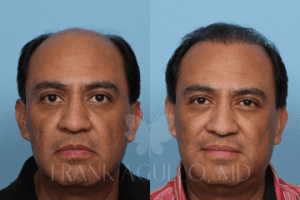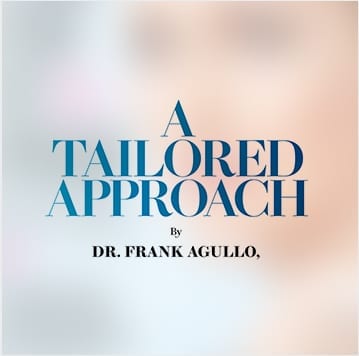June 06, 2017 | Alopecia Areata, El Paso Office, Female Hair Loss, Follicular Unit Extraction, Follicular Unit Transplantation, Fuller Head of Hair, Hair Transplant, Hair Treatment, Laser Therapy, Male Hair Loss, Male Pattern Hair Loss, Platelet Rich Plasma, Trichotillomania
Many men and women who experience hair loss feel as though they are alone, when in reality, hair loss is a common condition. Hair loss can occur for a variety of reasons in men and women of all ages. If your hair has begun to fall out, there is no need to feel hopeless. The following hair restoration treatments can restore a fuller head of hair and improve your self-confidence and self-image.
Causes of Hair Loss
Androgenic alopecia (AGA) is the most common cause of hair loss. As this genetic condition can affect both genders, it may be called male pattern hair loss (or male pattern baldness) and female pattern hair loss. Male hair loss is far more common than female hair loss, especially as men age. In addition to AGA, hormones and age can contribute to male hair loss. Men in their 50s have a 50 percent chance of having noticeable hair loss.
Female hair loss can be caused by androgenic alopecia as well as other conditions such as alopecia areata, trichotillomania, loose-anagen syndrome, scalp infections, and scarring alopecia. Temporary hair loss is more common in women than men and is usually related to hormonal changes, hypothyroidism, stress, or certain medications.
Getting Treatment for Hair Loss
If you have hair loss, hair restoration treatment methods can help. An accurate diagnosis is essential, especially for women because they are more likely to have alternate causes of hair loss than AGA. Treatment for hair loss includes the following options:
- Medication: Hair loss medicines such as Rogaine® (minoxidil) and Propecia® (finasteride) can be used to treat hair loss.
- PRP: Platelet-rich plasma injections can stimulate hair growth, prevent hair loss, and improve the quality of the hair. The procedure consists of taking a small amount of blood from the patient and processing it to concentrate the platelets. The platelets in the body contain many growth factors, and these are injected into the scalp. The new protocols consist of an injection once a month for four months. The patient can resume normal activity the following day. Research has shown an 80 percent response rate.
- Laser Therapy: Photo-biotherapy can stimulate the hair follicles so that they produce thicker hair, which improves hair volume. This treatment is most beneficial for women who have diffuse hair loss. Low-level laser therapy (HairMax®) can also be used as a non-surgical treatment for male hair loss.
- Camouflage: Creative hair styling and the strategic use of sprays and powders can help conceal hair loss for those with enough hair to support these methods.
- Follicular Unit Transplantation (FUT) Hair Restoration Surgery: A strip of tissue is removed from the sides or back of the head and split into units of one to four hairs. These are then transplanted to the recipient site through tiny incisions. This technique is best for larger transplants and is the most commonly used hair transplantation procedure.
- Follicular Unit Extraction (FUE) Hair Restoration Surgery: Tiny, round incisions are made around hair follicles on the sides or back of the head and removed one at a time. They are then transplanted into the recipient site. This technique is best for smaller areas and is a longer and costlier procedure than FUT.
With the right treatment, hair loss can be corrected and a fuller head of hair can be restored. If your hair is falling out, schedule your consultation with Dr. Frank Agullo for hair restoration treatment. Call (915) 590-7900 or contact Dr. Agullo online to book your appointment today.




